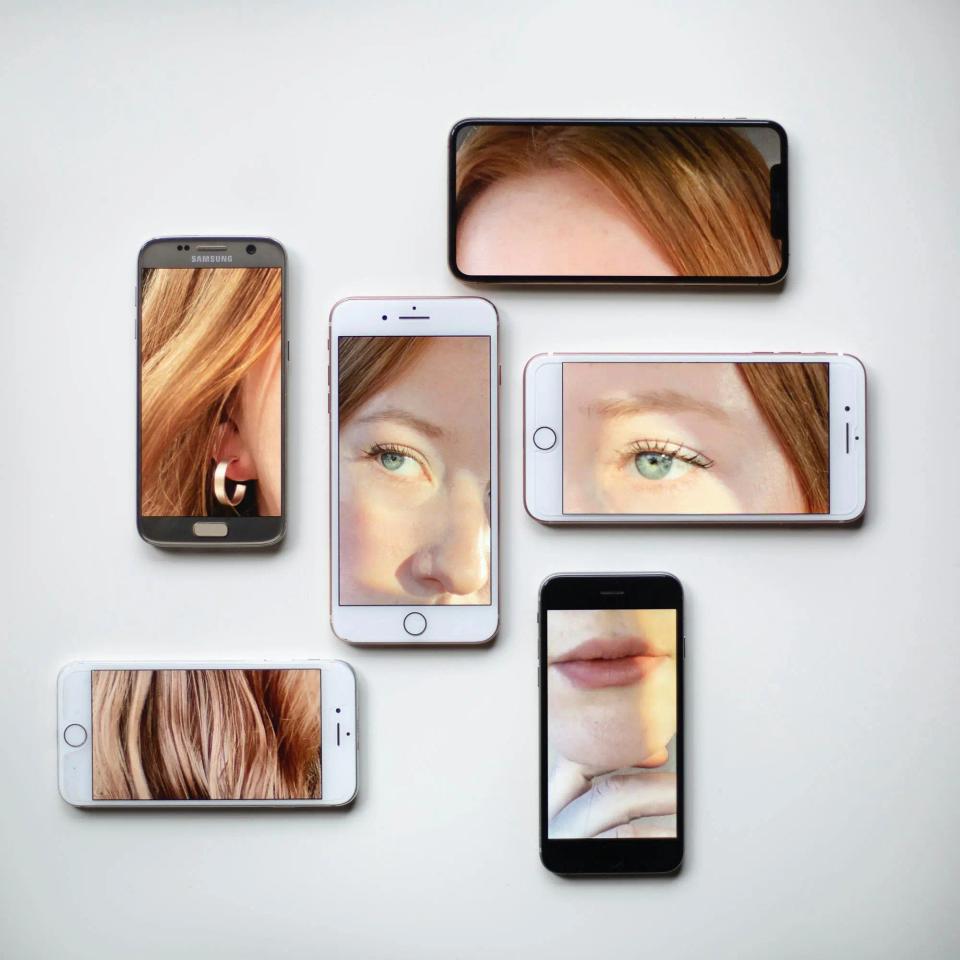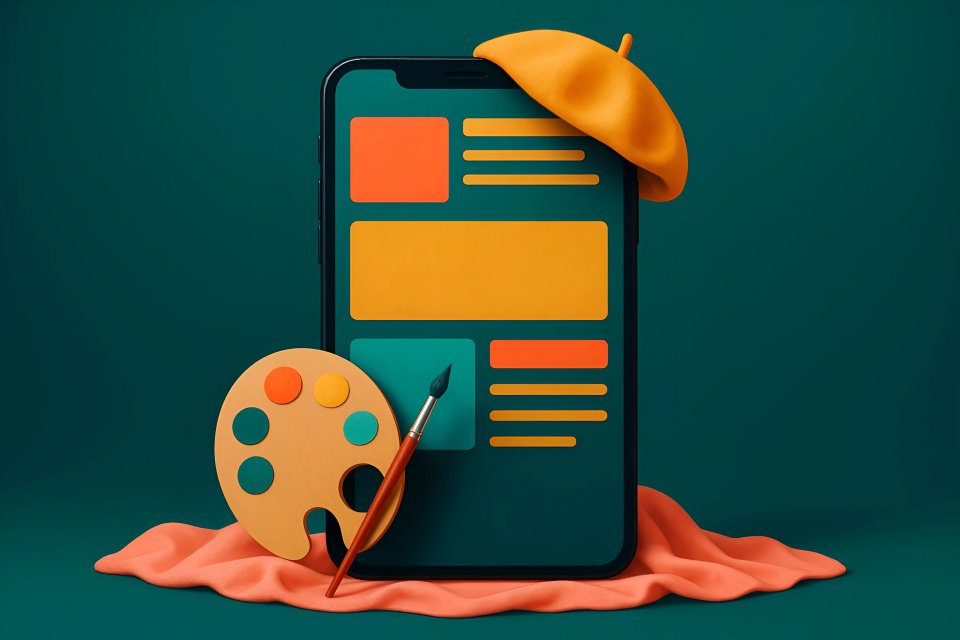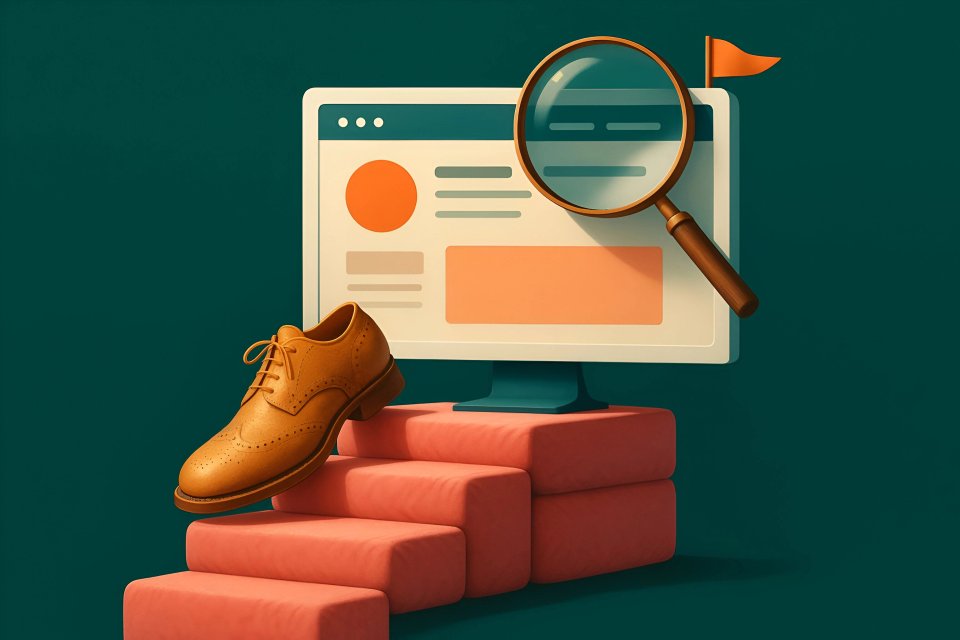Why do some brands feel instantly familiar and trustworthy, while others fade into the noise? The answer isn't just a great product. It's a great story, told visually.
Too many businesses have a powerful mission but fail to communicate it. Their website looks different from their social media, and their logo feels disconnected from their message. This chaos doesn't just look unprofessional; it confuses your customers, erodes trust, and kills your impact before you even get started.
This guide will show you how to stop the bleeding. We will walk you through building a memorable and cohesive brand identity that commands attention. You will learn to merge the raw, emotional power of visual storytelling with the sharp precision of strategic design to forge a brand that captivates hearts and opens wallets. By the end, you'll have a clear framework to define your brand's narrative and translate it into a visual system that works tirelessly for you.
Beyond the Logo: What is a Cohesive Brand Identity?
Let's get one thing straight: your brand is not your logo. A brand visual identity is the complete, unified sensory experience you create for your customer. It’s the sum of your colors, your fonts, your photos, and the very way you arrange them on a page.
When these elements work in harmony, the magic happens. Consistency builds a powerful sense of trust and professionalism; in fact, presenting a brand consistently across all platforms can increase revenue by up to 23%. A unified look makes your brand instantly recognizable, whether a customer sees you on a tiny phone screen or a massive billboard. This creates an unbreakable emotional bond that turns one-time buyers into lifelong advocates for your mission.
At CaptivateClick, we know this isn't just theory—it's the foundation of success. Our brand strategy process always begins here, ensuring every single design choice we make is deliberate and powerful. For a foundational look at the individual components, explore our guide to mastering business branding with a distinct visual identity.
The Narrative Engine: Uncovering Your Brand's Core Story
Before you pick a single color or font, you must answer one question: what story are you telling? Storytelling in design isn't about writing a fairy tale. It's about excavating the raw, authentic "why" that drives your business forward.
To find your narrative, you must answer a few core questions. First, The "Why": What is your ultimate purpose? Forget what you sell; what change do you want to make in the world? Next, The Hero: Who is your customer, really? What keeps them up at night, and what are their secret ambitions?
Finally, you must define your role in their journey. The Guide: How do you, the brand, help the hero win the day? And what is The Tone & Personality you'll use? Are you Bold, Innovative, and Playful, or are you Calm, Wise, and Assured? Defining this story is the first step toward crafting a distinct brand identity that truly connects.
The Strategic Blueprint: The 5 Core Elements of Visual Identity
This is where your story takes physical form. Strategic brand design is the art of making deliberate, calculated choices for each visual element to perfectly reflect your core narrative. It’s the difference between a brand that feels random and one that feels inevitable.
1. The Color Palette: Setting the Emotional Tone
Color is a primal language that speaks directly to our emotions. According to HubSpot, color improves brand recognition by up to 80%, making it a critical strategic asset. You must choose a palette that doesn't just look good but feels right.
A brand built on trust and security, like a financial institution, will lean on deep blues and solid grays. A wellness brand focused on natural energy might use vibrant yellows and earthy greens. Your color palette is the emotional backdrop for your entire story.
2. Typography: Finding Your Brand's Voice
If color is your brand's mood, typography is its voice. The fonts you choose say more than the words they spell out. Are you speaking in the traditional, elegant tones of a serif font, or the clean, modern voice of a sans-serif?
A high-end law firm would never use the same playful script font as a local coffee shop, and for good reason. Your typography must match the personality you defined in your brand story. It’s a subtle cue that builds immense trust and reinforces who you are.
3. Logo & Logomarks: The Anchor of Your Identity
Your logo is not the story; it is the signature at the end of the letter. It should be a simple, memorable, and powerful symbol that instantly brings your entire brand narrative to mind. It’s the visual anchor for everything you do.
Think of the world's most iconic logos—they are deceptively simple yet packed with meaning. A well-designed logo is the cornerstone of your visual identity, and mastering its creation is essential. For a deeper look, you can learn more about crafting a compelling brand identity through strategic logo design.
4. Imagery & Iconography: Showing, Not Just Telling
Your brand's story comes alive through the images you choose. You must define a clear, consistent style for every photo, illustration, and icon you use. As Movavi notes, visual content like images on Facebook can generate over twice the engagement of posts without them, proving their power to capture attention.
Are your photographs bright, airy, and full of life, or are they dark, moody, and cinematic? Do your icons use sharp, clean lines, or do they have a soft, hand-drawn texture? This visual language must align perfectly with the emotional tone of your narrative.
5. Composition & Layout: Creating Order and Flow
How you arrange these elements is just as important as the elements themselves. Strategic use of white space, a consistent grid system, and a clear visual hierarchy guide your audience through your story. It creates a sense of calm and order, making your message easy to understand.
This is where brand identity meets user experience. A well-organized layout on your website or in your marketing materials isn't just good design; it's a sign of respect for your customer's time and attention. To see how this applies directly to your site, review these essential website design principles to enhance your brand's identity.
The Master Plan: Crafting a Cohesive Brand Identity Using Visual Storytelling
Now, let's put it all together. This is the step-by-step process for forging your own cohesive visual identity.
First, Step 1: Define Your Narrative. Take the answers from the "Narrative Engine" section and write a simple, one-page brand story brief. This is your constitution, the document against which all future design decisions will be judged.
Next, Step 2: Create a Mood Board. Translate the keywords from your story—like "Bold," "Natural," or "Minimalist"—into a visual collage. Gather colors, textures, fonts, and images that evoke the exact feeling you want your brand to inspire. This is your creative sandbox.
Then comes Step 3: Make Strategic Design Choices. Use your mood board as your guide to select your final color palette, typography, and imagery style. Every choice must be justifiable and directly linked back to your core story.
Now, Step 4: Apply Consistently. Imagine your new identity on a website homepage header, an Instagram post template, and a business card. The feeling should be the same across all of them. This is the essence of creating a cohesive brand identity through visual storytelling across all your digital platforms.
Finally, Step 5: Document Everything in Brand Guidelines. This is the master key to long-term cohesion. This document details your logo usage, color codes, typography rules, and imagery style, ensuring anyone who works on your brand can maintain its integrity. At CaptivateClick, providing these guidelines is a core service we offer to empower our clients for years to come.
Brands That Get It Right: Visual Storytelling in Action
Some brands have mastered this art, creating identities that are both iconic and deeply resonant.
Take Airbnb. Their story is about belonging, community, and trust. As Superside highlights, their visuals reflect this perfectly with a soft, warm color palette, a friendly sans-serif font, and authentic, user-generated photography that makes you feel like you're already part of a global neighborhood.
Then there's Patagonia. Their story is one of rugged durability and fierce environmental activism. Moonb.io points to their "Worn Wear" campaign, which uses documentary-style visuals and earthy tones to celebrate old, repaired gear. Their visuals don't just sell jackets; they sell a philosophy of sustainability and adventure.
Just as these global brands align their visuals with their mission, we helped the Scandinavian wellness brand Fjällbris bring their story of tranquility and nature to life online. Through a strategic visual identity, we translated their core narrative into a digital experience that feels as calm and refreshing as a Nordic breeze.
Your Brand's Next Chapter Starts with a Cohesive Identity
Let's bring it all home. A powerful brand is not an accident. It is built on the bedrock of a clear story, translated through the language of strategic design, and applied with relentless consistency everywhere your customers see you.
Building a cohesive brand identity is one of the most valuable investments you can make. It pays dividends in trust, recognition, and unstoppable growth. It is the foundation upon which all of your marketing, sales, and customer relationships are built.
Ready to stop blending in and start telling a story that captivates? At CaptivateClick, we specialize in crafting cohesive brand identities that merge creative storytelling with strategic design. We build brands that don't just get seen—they get remembered.













